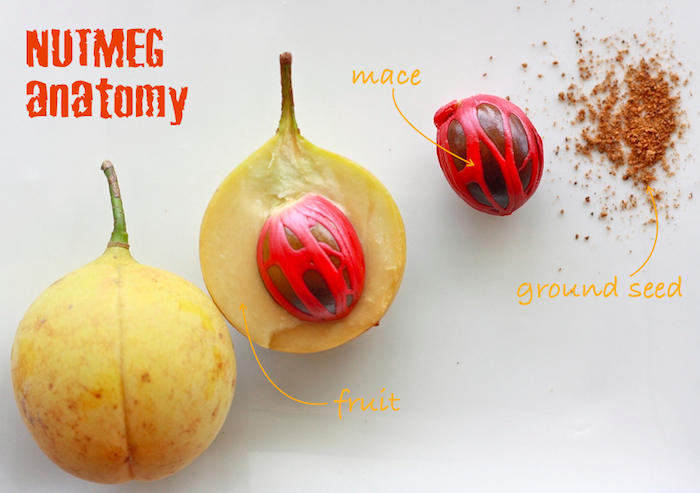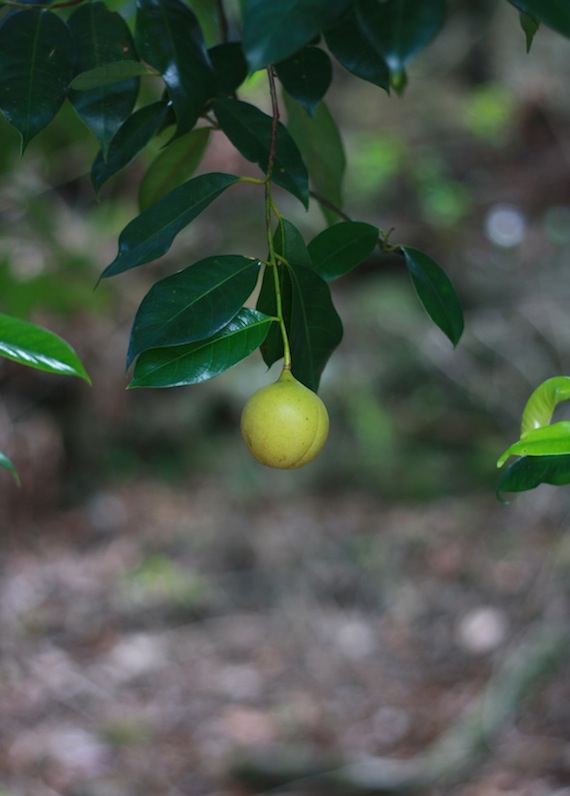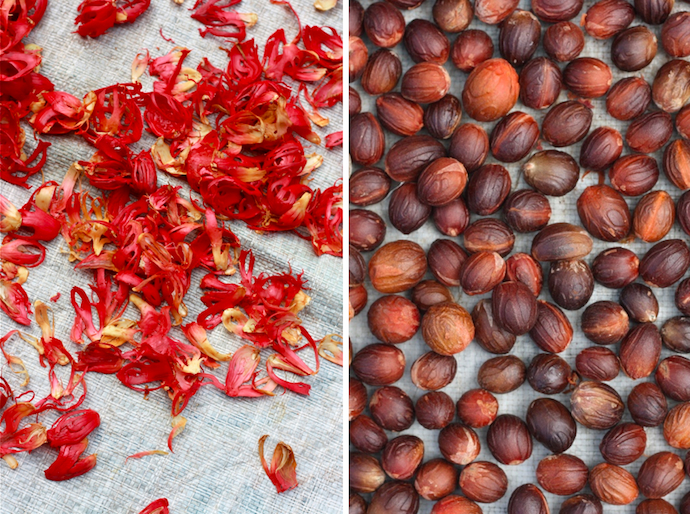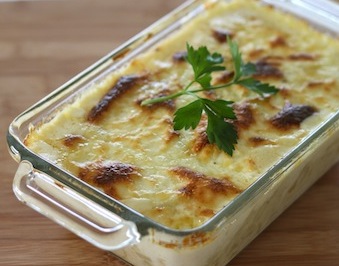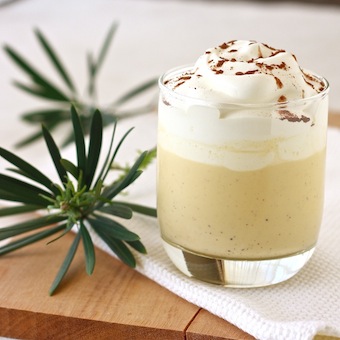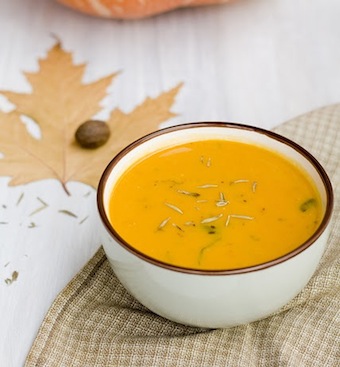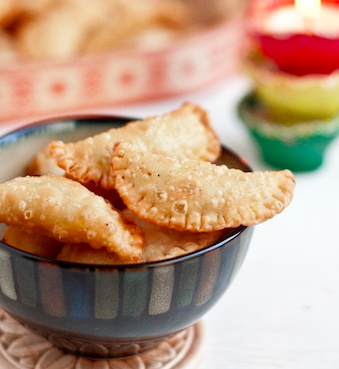Eat too much of this tangy spice and you'll hallucinate. No kidding. But just a dash and you'll wake up any dish.
That's nutmeg. A spice we've all tasted, but have you seen one before?
Put your hand in front of you and pretend your holding a yellow, apricot-shaped fruit. Peel the skin with a knife, and you will see the firm, pale-yellowish fruit. The sour fruit is edible, but the reward is inside. Cut the fruit away, and you will be surprised to find what looks like a brown nut wrapped in a web-like, glossy red skin. That skin covering is the aril, and is actually a different spice called mace. Peel the aril off, and then sun-dry the brown shell for a couple of weeks until the seed rattles inside. Crack the shell open, and now you have it. Just grind or grate that light brown seed, and you have nutmeg spice.
It may not feel special to have a nutmeg seed in your hand, but it was a prize wars were once fought over.
Centuries ago, the nutmeg seed was the rarest and most sought after spice. The Banda Islands in Indonesia where it originated were even called "The Spice Islands" - a once secret location causing European colonial powers to clash over their control.
The evergreen trees that produce nutmeg can now be found in many tropical locations, including Penang where the fruit is blended into a juice, or dried and sweetened into a snack. The whole seed is used in Malaysian-Chinese dishes such as Chai Boay 酸辣菜 - a special stew that is cooked with whole nutmeg seed, pickled vegetables, pork or chicken, mushrooms, and other leftovers.
But for many of us, the ground nutmeg seed is that warm, nutty, sweet & spicy, Christmassy flavor added to pies, cakes, cookies, eggnog, and other desserts.
While tempting, especially during the holidays, an overindulgence in nutmeg can make you hallucinate. But it also has its health benefits when taken in moderation. Nutmeg can help lower blood pressure, soothe a stomach ache, and help detoxify the body.
And if the tale is true, help attract admirers if you tuck a nutmeg under the left armpit before attending a social event...
Other than appearance, what's the difference between nutmeg and mace?
Looking at the brown seed and the striking red aril, it's hard to imagine any similarities, but surprisingly, they taste almost identical (and have similar oil content). Nutmeg has a deeper, slightly spicier flavor than mace, but the difference is so subtle that nutmeg can be substituted for mace, and vice versa, in dessert and savory recipes.
For a taste of nutmeg (or mace), give these recipes a try:
Centuries ago, the nutmeg seed was the rarest and most sought after spice. The Banda Islands in Indonesia where it originated were even called "The Spice Islands" - a once secret location causing European colonial powers to clash over their control.
The evergreen trees that produce nutmeg can now be found in many tropical locations, including Penang where the fruit is blended into a juice, or dried and sweetened into a snack. The whole seed is used in Malaysian-Chinese dishes such as Chai Boay 酸辣菜 - a special stew that is cooked with whole nutmeg seed, pickled vegetables, pork or chicken, mushrooms, and other leftovers.
But for many of us, the ground nutmeg seed is that warm, nutty, sweet & spicy, Christmassy flavor added to pies, cakes, cookies, eggnog, and other desserts.
While tempting, especially during the holidays, an overindulgence in nutmeg can make you hallucinate. But it also has its health benefits when taken in moderation. Nutmeg can help lower blood pressure, soothe a stomach ache, and help detoxify the body.
And if the tale is true, help attract admirers if you tuck a nutmeg under the left armpit before attending a social event...
Other than appearance, what's the difference between nutmeg and mace?
Looking at the brown seed and the striking red aril, it's hard to imagine any similarities, but surprisingly, they taste almost identical (and have similar oil content). Nutmeg has a deeper, slightly spicier flavor than mace, but the difference is so subtle that nutmeg can be substituted for mace, and vice versa, in dessert and savory recipes.
For a taste of nutmeg (or mace), give these recipes a try:
|
|
|
|
|
|

